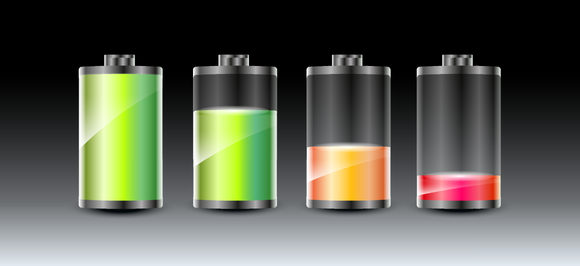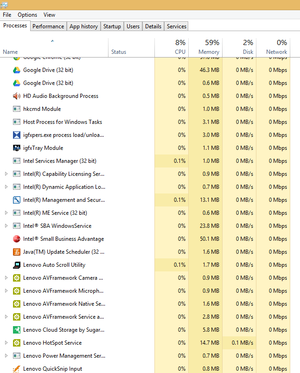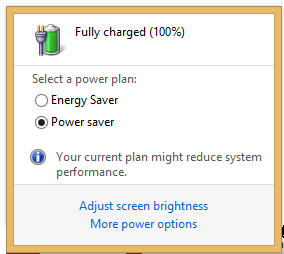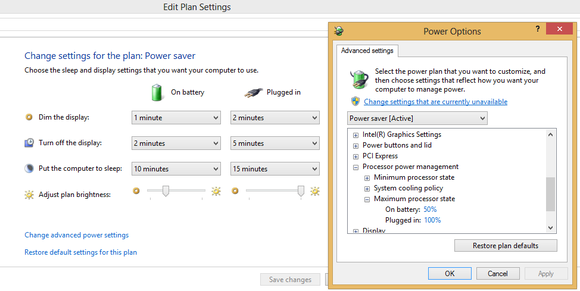
An earlier draft of this article was published accidentally. The final version has been restored as of 9:00 a.m., PT. PCWorld regrets the error.
When Mac faithful tussle with Windows aficionados, the fur can fly. And at some point, someone will probably bring up the old battery life chestnut: Windows laptops simply run out of juice when you need them most, while MacBooks just keep chugging away.
Battery life is a serious issue. Every road warrior fears running out of power at the worst possible moment. Preventing this scenario has quietly emerged as the most significant design trend in mobile computing. Smartphones like the Galaxy Note 3, LG G2, and Moto X have prioritized battery life, while power-sipping chips, like Intel’s Haswell and Bay Trail Atom, now inhabit PCs that offer all-day computing—especially when paired with keyboards or covers with supplemental batteries inside.
Meanwhile, deciding between an Apple laptop and a Windows PC remains a perennial question.
Surface Pro 2 battery bummer
The PC-versus-Mac controversy took new life last week thanks to Jeff Atwood, who runs the Coding Horror blog. Atwood examined data supplied by Anand Lal Shimpi of AnandTech, ran some tests of his own, and then came to some alarming conclusions.
Using the 15-inch MacBook Pro, in 2008 Shimpi discovered that the laptop’s battery lifevaried dramatically when running three different operating systems on top of the same hardware. His test systems included OS X 10.5.7 (Leopard), Windows Vista X64 SP1, and the release candidate of Windows 7. In fact, Shimpi’s tests showed that the MacBook Pro lasted almost 2 hours longer under OS X. AnandTech had also published battery-life tests indicating that the 11-inch MacBook Air lasted over 11 hours during Wi-Fi Web-surfing tests.
Flash forward to last week. Looking at the Surface Pro he owned and the Surface Pro 2 he had on order, Atwood saw that the expected battery life of the new Surface Pro 2 was just a third better than the previous generation’s, at about 6.6 hours. (PCWorld’s own tests of a 64GB Surface Pro 2 yielded a battery life of 6 hours, 9 minutes.)
“The Surface Pro 2 has a 42 Wh battery, which puts it closer to the 11 inch Air in capacity,” Atwood wrote. “The Air is somehow producing nearly two times the battery efficiency of the best hardware and software combination Microsoft can muster, for what I consider to be the most common usage pattern on a computer today. That’s shocking. Scandalous, even.”
Yes, Windows is less efficient (on the Mac)
Our interest piqued by Atwood’s blog post, we ran our own battery tests of different operating systems running on a single piece of hardware: In this case, the 2012 Ivy Bridge-based 13-inch MacBook Pro. We used Apple’s latest operating system, OSX 10.9 Mavericks, as a baseline, and compared it to Windows 7 SP1 and Windows 8.1, using Apple’s Boot Camp to multiboot all three systems. We also set specific testing parameters to minimize various hardware effects. These included preventing the system and display from sleeping; setting display brightness to a uniform 150 cd/m2; and turning adaptive brightness off.
We then charged up the Air to full capacity and performed our standard Wi-Fi battery rundown test for each of the three systems, each time accessing a series of websites until the notebook conked out. Our browsers differed for each OS. We used Internet Explorer 10 for Windows 7, IE 11 for Windows 8.1, and Safari for the Mac OS, opting for each system’s default, stock browser. We used the Windows Power Saver profile for the Windows tests. At Microsoft’s request, we also installed Flash on Safari to ensure that any webpages were rendered completely.
The results were telling: The MacBook Pro running Mac OS X Mavericks lasted just over 7 hours. That’s about 2 hours—or about 29 percent—longer than it did when running Windows 7, which pooped out at just over 5 hours. And even worse for Windows users, our data indicates that “upgrading” to Windows 8.1 is really a downgrade in battery life, as the new system expired at just 4 hours and 41 minutes.
Microsoft’s explanation: Optimized drivers
Alarming results, right? Microsoft was ready with a response. ”What appears to be the most fair comparison is actually the least fair comparison,” said Gabriel Aul, director of program management at Microsoft.
Aul told us that Apple’s Boot Camp provides a thin layer of code between the operating system and the Mac hardware itself, along with drivers to access the Mac’s hardware. Each driver is a bit of code that controls individual components, such as the Wi-Fi radio or the laptop’s display. And according to Aul, the basic Boot Camp installation uses a mixture of generic drivers and unoptimized drivers. (Here’s a Macworld explanation of how Boot Camp works.)
Drivers can make or break battery life performance, Aul said. “Device firmware and buses optimized for particular power states can have a huge impact on battery life if you have something like a radio” that’s not properly tuned, he said.
For example, a Wi-Fi radio’s default driver setting may be set to maximum power to deliver the best throughput at maximum range. But that setting may also spur the battery to drain even faster than usual. And when a PC constantly powers on the Wi-Fi radio to download websites, those small differences can add up.
”What we can observe makes us think that... [Windows] off-the-shelf devices are highly competitive on battery life,” Aul said. “On that [Mac], [those drivers] may not be particularly tuned for Windows.”
Hardware makers like Asus, Dell, and Lenovo spend a great deal of money tuning drivers and creating an optimized profile that trades some performance for battery life, Aul said. Microsoft, in fact, released a firmware update last Friday for the Surface Pro 2 that significantly improves how the OS interacts with the Intel Haswell processor, improving battery life, he said. Apple’s Boot Camp simply doesn’t go the extra mile to preserve run times.
At face value, Microsoft’s explanation is plausible. But could optimized drivers really wave away a 2-hour difference in battery life?
Windows runs a herd of background processes, some of which poll either the Internet, the CPU, or the disk for information or updates. As I write this, for example, my PC is running eight applications—plus 118 background processes. But Aul said they could not adversely affect battery life. “We spent a great deal of time tuning” the system for I/O prioritization, he said.
That means Windows spends a great deal of effort trying to avoid spinning up the disk or touching the CPU for system activities, such as indexing the disk. But if a user is calling up a photo or an application, Windows will piggyback on the request and accomplish a few key tasks. “We want to do that and get out of the way,” Aul said.
It is possible, however, that a few poorly tuned, third-party applications may contribute to a decline in battery life, Aul said. “For people that used to get great battery life, that’s usually the culprit,” he said.
Aul also suggested that if PCWorld created a so-called “Hackintosh”—a Mac cobbled together and programmed with the Mac OS, and also Windows—such an untuned configuration would favor Windows. There, the problem would be reversed: The Mac OS would be “unaware” of the hardware, and not properly tuned. (Macworld's lab staff recently built a “FrankenMac” that could run Mac OS X, but they didn't try Windows on it.)
Arguably, running Windows on a Mac, or the Mac OS on a PC, are absurd tests that aren’t going to give you clear answers on anything. All we regular users care about is battery life, regardless of the OS. Apple is ahead on this game, but Windows users have some options for configuring their power settings, either through utilities provided by the computer manufacturer or via Windows itself.
In Windows, the simplest way is to click the small battery icon in the Windows system tray. This will bring up a snapshot of the remaining battery charge, by capacity and estimated runtime. At this point, you can alter some basic settings to improve battery life. For instance, a laptop’s display and backlight can consume 20 to 25 percent of the typical power within a PC, so telling the laptop to shut them down automatically within a few minutes of inactivity can extend battery life a bit.
Windows also offers more aggressive options, which you can access via Control Panel > Hardware and Sound > Power Options > Edit Plan Settings. From here, select Change advanced power settings at the bottom of the window. In the advanced settings, you have the option of limiting the available CPU speed and even controlling the fan.
Some of this may be overkill. “I usually don’t recommend turning on the power saver unless your machine is already overpowered,” Microsoft’s Aul said. “If you’re going to play some games, turning on the power saver defeats the purpose.” As for the advanced options, says Aul, “I usually don’t recommend people tinker with that stuff.”
Finally, consider buying Windows hardware designed for longer battery life. Haswell machines offer a mix of power efficiency and performance, and the Bay Trail Atom (Atom Z37xx series) allows everything from basic Web browsing to moderate gaming. Displays with adaptive brightness can dial themselves down when needed. And if you’re willing to fork over some additional cash, solid-state drives (SSDs) offer faster access times and lower power demands.
Correction: The MacBook used for PCWorld testing was a 13-inch MacBook Pro, not a MacBook Air. We have also noted that we used the Windows Power Saver power profile on our Windows tests.












0 comments:
Post a Comment